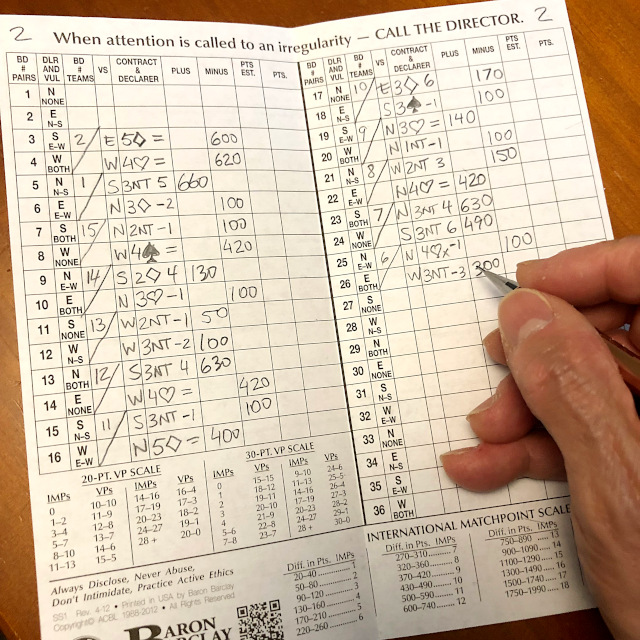|
Duplicate Bridge Movements
A duplicate bridge movement is a scheme used in a duplicate bridge session to arrange which competitors play which opponents when, and which boards they play. The arrangement has to satisfy various constraints which often conflict to some extent, requiring compromises. The resolution of these compromises is to a considerable extent a matter of taste, so players should be consulted as to their preferences if this is practicable. Movements are categorized by the type of event—Individual, Pairs, or Teams. Requirements for duplicate bridge movements Three absolute requirements for a bridge movement are universal: #No entrant (individual, pair, or team, depending upon the type of the event) may play the same deal more than once. #The number of deals in each session must be appropriate to the level of competition and the circumstances. #The movement must provide enough stationary or nearly stationary positions to accommodate the needs of all players who have disabilities and/or mobi ... [...More Info...] [...Related Items...] OR: [Wikipedia] [Google] [Baidu] |
Duplicate Bridge
Duplicate bridge is a variation of contract bridge where the same set of bridge deals (i.e. the distribution of the 52 cards among the four hands) are played by different competitors, and scoring is based on relative performance. In this way, every hand, whether strong or weak, is played in competition with others playing identical cards, and the element of skill is heightened while that of chance is reduced. This stands in contrast to Bridge played without duplication, where each hand is freshly dealt and where scores may be more affected by chance in the short run. Four-way card holders known as Bridge boards are used to enable each player's hand to be preserved from table to table, and final scores are calculated by comparing each pair's result with others who played the same hand. In duplicate bridge, players normally play all the hands with the same partner, and compete either as a partnership (in a 'Pairs tournament') or on a team with one or more other partnerships ('Te ... [...More Info...] [...Related Items...] OR: [Wikipedia] [Google] [Baidu] |
